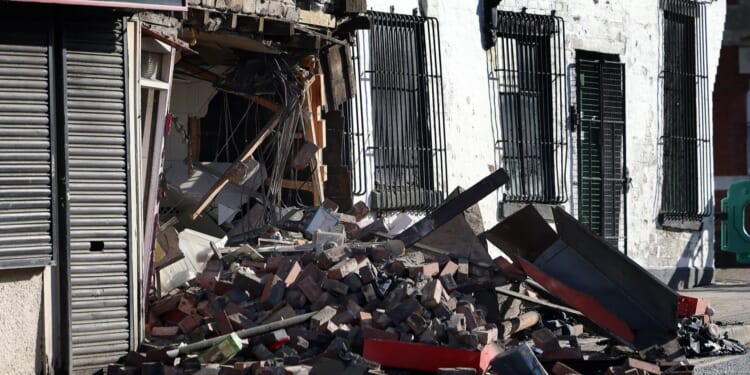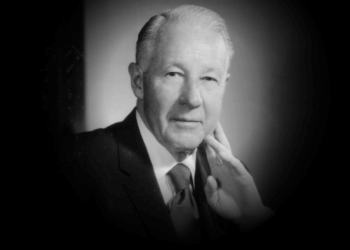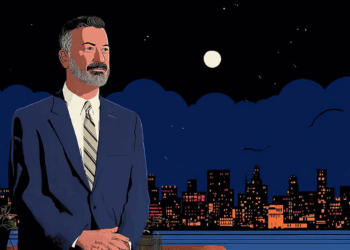On a scorching afternoon, a steady beat echoes from a shaded corner at Faneuil Hall Marketplace. Joshua Rodriguez, a street drummer, taps out rhythms on a drum set of buckets, pans, and lids. Although the sun barely touches him through the leaves, the heavy heat of the day hangs in the air. When someone drops a few dollars into his tip bucket, he smiles and shouts, “Yes! I made some money.”
Most summer days, Mr. Rodriguez plays for hours, drawing steady crowds. But during a recent heat wave, the hall felt quieter. Fewer people stopped to listen. Even in the shade, he often takes a break from drumming to rest and hydrate.
Mr. Rodriguez is far from the only one affected by the summer’s heat. Heat domes have hovered over vast areas of the country. Across the contiguous 48 states, June temperatures were the seventh hottest in 131 years of record-keeping. Boston’s mayor this week declared the city’s third heat emergency of the summer, after seeing record-breaking temperatures push the city’s electrical grid near the edge even in early June.
Why We Wrote This
Summers have been getting longer and hotter, with more days of extreme heat. Some states, cities, and employers are taking steps to keep outdoor workers safer. A pending federal rule would take safety guidelines nationwide.
In recent years, recognition has been growing among officials in many cities that heat is something more than just a summer nuisance, it’s a workplace hazard. Boston is an example of how some cities are trying to grapple with the issue, with workers and employers themselves taking steps such as scaling back outdoor schedules. Efforts by employers, while essential, highlight the lack of clear, enforceable standards for heat safety – an absence the nation might be poised to address.
“Ultimately, we want to protect every single individual from their body temperature exceeding dangerous temperatures,” says Madeleine Scammell, an environmental health professor at Boston University School of Public Health.
Though federal law requires employers to provide safe working conditions under the Occupational Safety and Health Administration’s General Duty Clause, it’s often unclear what that means during times of extreme heat.
A proposed OSHA rule, not yet in effect but now out for public input, would begin to bridge the gap by mandating things such as rest breaks and water access above certain temperatures for people who work outdoors.
At the state level, such standards are a patchwork. Across the country, summers are growing hotter and longer, and workers are increasingly exposed to extreme heat. But few legal protections exist to ensure people’s safety. In most states, including Massachusetts, there are no specific standards requiring rest breaks or shaded areas during high-heat conditions. State officials are trying to change that. Some states, such as California and Oregon, already protect workers through enforceable heat-safety regulations.
What counts as extreme heat?
To some degree, extreme heat is relative. What could be considered unusual in Boston might be a normal temperature in a state such as Arizona. “What we’re talking about is temperatures that are above expected or what is normal for the area in which you are,” says Ashley Ward, director of the Heat Policy Innovation Hub at Duke University’s Nicholas Institute for Energy, Environment & Sustainability.
The National Weather Service defines extreme heat using the heat index – a measure that combines temperature and humidity. But researchers say the index often falls short. “One of the things that some research in the past has shown is that the heat index can be off by as much as 15 degrees based on temperatures being in the sun versus being in a shade,” says Brian Bossak, a professor of public health at the College of Charleston.
Wind speed is another factor that affects whether people feel hot, comfortable, or even chilly. A metric that offers a more complete picture of how it actually feels, folding all these elements together, is called the WetBulb Globe Temperature. But it is still under development.
Rising responses by government
As extreme heat events become more frequent, Boston is beginning to take action, building on a Heat Resilience Solutions plan first launched in 2022.
City Councilor Liz Breadon says part of the effort is to plant “more trees so that we can actually increase the tree cover, especially in publicly owned spaces that the city controls, to increase our tree canopy.”
Also, the city is working on an ordinance that would require employers to offer cooling stations, access to water, and adequate breaks during work hours. The city councilors, in what Ms. Breadon describes as an advisory role, are trying to raise awareness at the state level for more changes.
“One of the reasons why Massachusetts doesn’t have its own standard yet is that we adopted the OSHA standards,” says Michael Flanagan, director of the state’s Department of Labor Standards.
“Because they didn’t have one, as a result, we didn’t add one either,” he says.
That might soon change – in Massachusetts and nationwide.
The Department of Labor Standards is working with other state agencies and municipalities to create a heat-safety standard.
Nationally, a proposed rule to prevent heat-related injury and illness could cover more than 36 million workers in construction, agriculture, and other industries. Employers would be required to provide cool drinking water and shaded or air-conditioned break areas when temperatures reach 80 degrees Fahrenheit. When it’s 90 degrees or hotter, the rule would mandate at least a 15-minute break every two hours.
A bill in Congress, meanwhile, seeks to codify such practices. Massachusetts Sen. Edward Markey, a Democrat, is among the lawmakers leading efforts to establish enforceable protections for workers exposed to extreme heat. With Democratic Sen. Alex Padilla of California and others as co-sponsors, the Asunción Valdivia Heat Illness, Injury, and Fatality Prevention Act would require an OSHA heat-safety standard including water, shade, rest breaks, and emergency procedures for heat-related incidents.
What local organizations are doing
Alongside government efforts, local organizations in Boston are taking their own steps to adapt to rising temperatures. At DalMoros Fresh Pasta in Faneuil Hall Marketplace, staff rotate through different stations to avoid spending too much time in the restaurant’s hot kitchen.
For businesses with outdoor workers, adjustments are also underway. Some dog-walking companies have shortened their routes and schedules to protect both workers and pets. In addition to monitoring city-issued heat advisories, Jennifer Rumpza, owner and manager of Hounds About Town, says they rely on a simple test: “If we can’t hold our hand on a pavement without it burning our hands, for at least five seconds, then we can’t expect the dogs to do that either,” she says.
Other groups are experimenting with wearable tech to better understand and manage heat exposure. Dr. Scammell says the Chelsea East Boston Heat Study, a collaborative study between environmental justice group GreenRoots and the Boston University School of Public Health, is in partnership with the Massachusetts Coalition for Occupational Safety and Health to pilot an armband that records body temperature in real time. They are also testing various cooling strategies, including cooling bandanas, vests, and waist fans.
When summer temperatures rise, workers such as Ayaan Jibril, a boutique owner, are forced to stay home during hotter days and can’t open their businesses. “I make myself busy,” she says. “I make more phone calls, I find where I [can] buy more items, and what else I [can] sell.” For workers like her, staying safe in the heat is becoming another part of the job.














